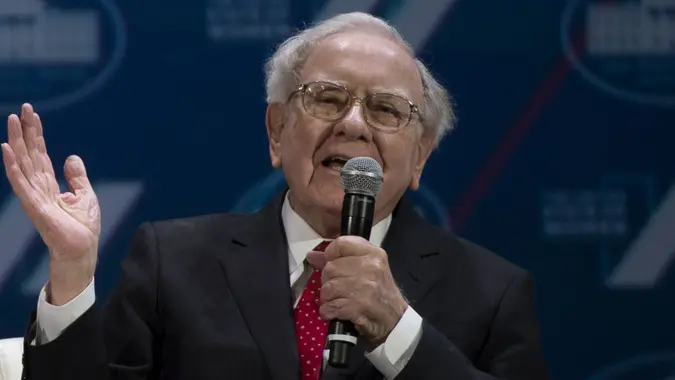Two Investments That Make People Millionaires Before 40 — and Neither of Them Are Stocks

Commitment to Our Readers
GOBankingRates' editorial team is committed to bringing you unbiased reviews and information. We use data-driven methodologies to evaluate financial products and services - our reviews and ratings are not influenced by advertisers. You can read more about our editorial guidelines and our products and services review methodology.

20 Years
Helping You Live Richer

Reviewed
by Experts

Trusted by
Millions of Readers
For decades, standard financial advice has held that the stock market is the single best option for wealth generation in the United States. A long-term average return of about 10% annually, coupled with a track record of having never lost money over any 20-year rolling period, has generally made this sound advice.
Even so, younger generations are finding different ways to become millionaires, far removed from the stock market. While carrying their own risks, and not being appropriate for everyone, some investors may be able to successfully work these non-stock options into their portfolios.
Real Estate
Real estate has long been an alternative way to generate wealth in America, and it’s gaining more and more popularity with the under-40 age group. Traditionally, housing was seen as a necessity that may keep up with the rate of inflation over the long run, but astute investors can actually make a sizable amount of money through carefully chosen investments.
Some methods to earn above-market returns from real estate include buying undervalued properties and rehabilitating them for sale, buying income-generating properties and using that income to purchase additional units, or simply “buying low and selling high.” Investors can either purchase properties outright, raise capital with an investor group, or purchase shares in a real estate investment trust or other investment pool.
The risks of owning real estate are significant, though, especially if you’re looking to generate large gains instead of holding a personal home for a lifetime. Buying a home and trying to flip it is a risky proposition, as costs can quickly run away from you and you’ll be paying finance charges every day until you sell your property. Rental properties require maintenance and repair and must be fully occupied to generate sufficient income.
But, if you’re a shrewd investor and you have sufficient capital to keep yourself afloat, you may be able to join those under-40 investors who use real estate to become millionaires.
Fine Art
Fine art isn’t an investment that gets much airplay in the financial press, but returns can be impressive — and access is becoming greater. While not many investors have $30 million laying around to buy a piece from a master like Monet or Picasso, some specialized investment companies have sprung up that allow investors to pool their money and essentially buy “shares” in an expensive work of art.
According to reputable investment firm Goldman Sachs, portfolios that have a slice of real assets like art outperform a traditional portfolio that’s 60% stocks and 40% bonds over the long run. Citibank also notes that about two-thirds of high-net-worth investors have at least 10% of their portfolios allocated to fine art, so there’s certainly some merit to this option.
There are many caveats to investing in fine art, however. Much like buying real estate, different segments of the art market often perform extremely differently. From 2000 to 2017, for example, the ArtPrice 100 Index, which tracks the prices of “blue chip” artists with large followings and high-dollar paintings, more than doubled the return of the S&P 500 index. But the ArtPrice Global Index, which tracks a broader range of artwork, failed to keep up with the stock market over the same time period.
The lesson here is that as with most investments, simply throwing money into a particular segment is not usually an efficient strategy. But if you have some knowledge of the art world, investing in fine art can provide both solid returns and diversification for a portfolio heavy in stocks and/or bonds.
Caveat: Not All ‘Alternative’ Investments Are Equal
While some alternative investments, like fine art and real estate, may help you on your quest to become a millionaire, this doesn’t mean that all non-stock investments are equal. Generally speaking, following the latest fad investment only works for a very short time period, after which the initial investors cash out their big profits and leave latecomers holding the bag.
In recent years, cryptocurrency, the metaverse, NFTs and meme stocks are just a few of the speculative investments that have made big headlines with their impressive price gains, only to leave the majority of investors with huge losses. On your quest to become a millionaire before age 40, avoid banking on “the next big thing” and instead choose alternative investments that are more established and have stood the test of time.
More From GOBankingRates
 Written by
Written by  Edited by
Edited by 

























